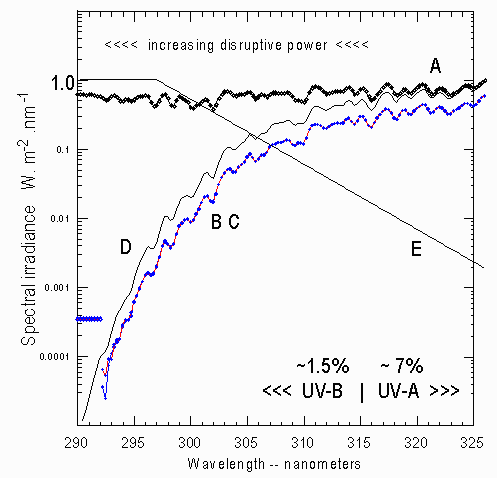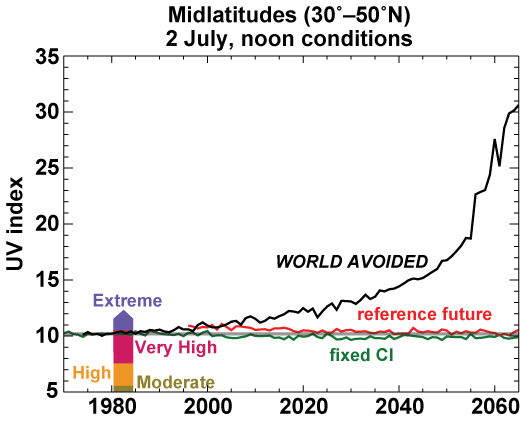It would be over 30 in the summer.
The UV index typically goes to 11, which is considered extreme, especially for mid-latitude cities.

This site provides the above graph which includes: The solar spectrum above the atmosphere (A), and at the ground level (B, C), ozone absorption (D), and the erythemal action spectrum (E).
The vast majority of radiation, especially for the more dangerous shorter wavelengths, is absorbed by the ozone layer. The ozone is responsible for absorbing all the UVC and 90% of the UVB.
This simulation explores what would have happened if we hadn't banned ozone depleting chemical use. It shows how the UV index would change for mid-latitude cities as the ozone depletes. It actually bottoms out at just under 30% our current ozone, so the UV index for 0% ozone would be much higher. The correlating decrease in ozone for this UV index increase is provided here.

So New York, which sits in the middle of this latitude range, would be sitting at a UV index of 30+ without ozone.


